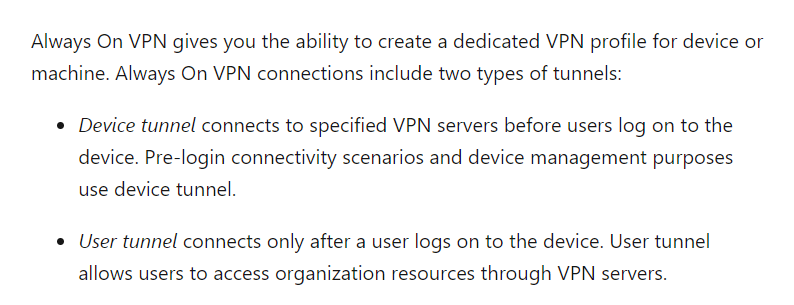Hi ,
You could consider to use Always On VPN Device Tunnel in such scenes.
Always On VPN Device Tunnel was designed with a specific purpose that being to provide pre-logon network connectivity to support scenarios such as logging on without cached credentials.
AOVPN Device Tunnel takes place as the machine has booted up. It does not require the user to log in first since it only requires the machine certificate to authenticate which will be used independently of which user logs in.
For your reference:
Always On VPN Device Tunnel Only Deployment Considerations
Please Note: Since the web site is not hosted by Microsoft, the link may change without notice. Microsoft does not guarantee the accuracy of this information.
Configure VPN device tunnels in Windows 10

Best Regards,
Candy
--------------------------------------------------------------
If the Answer is helpful, please click "Accept Answer" and upvote it.
Note: Please follow the steps in our documentation to enable e-mail notifications if you want to receive the related email notification for this thread.
